
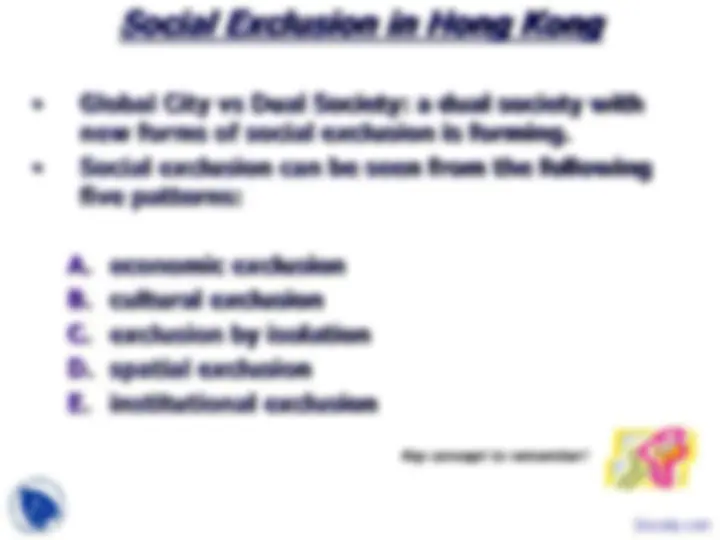
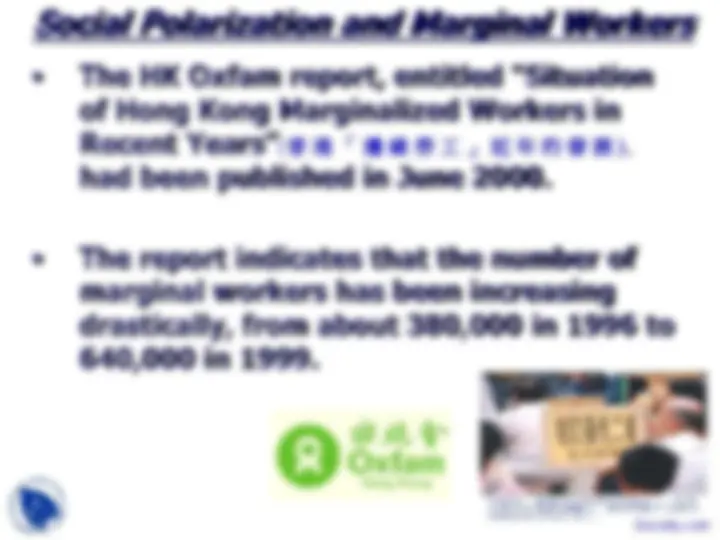
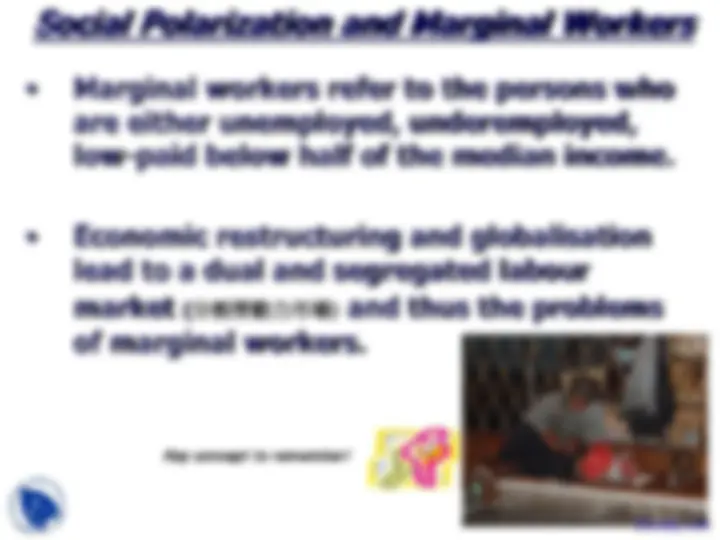




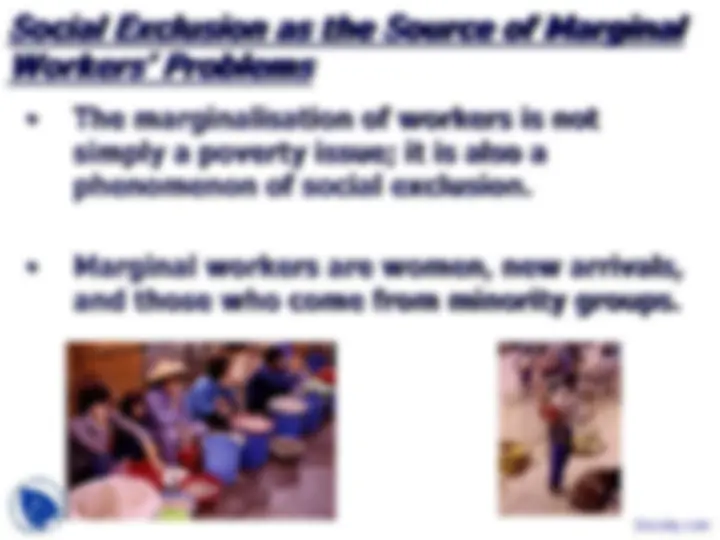

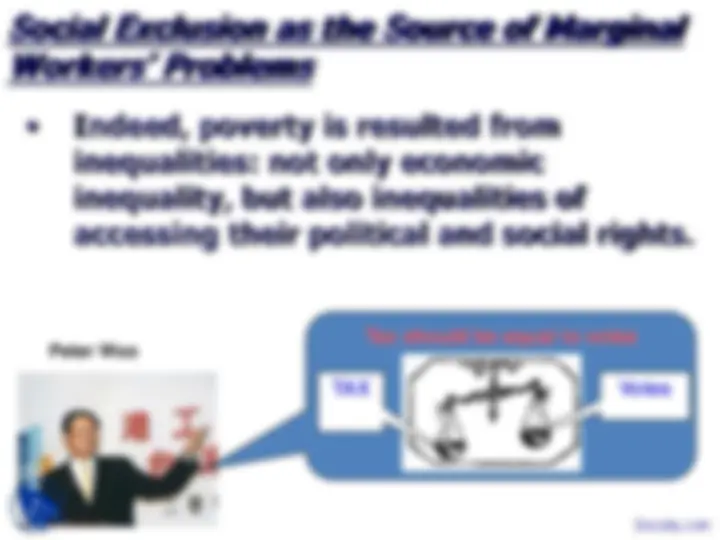
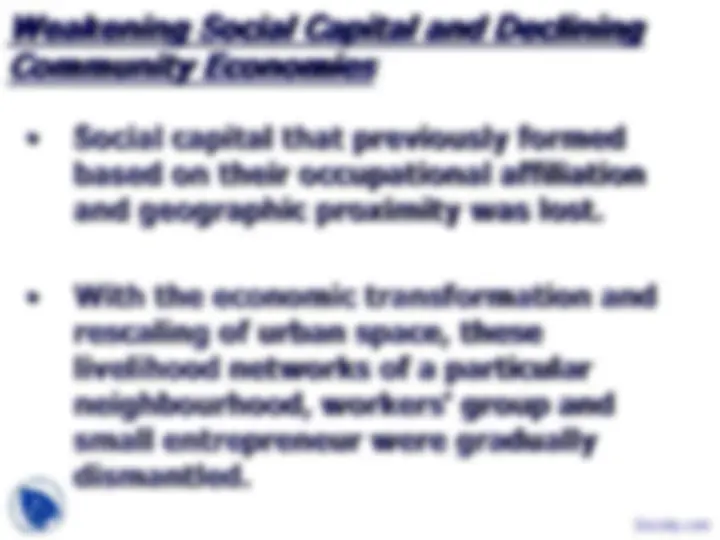
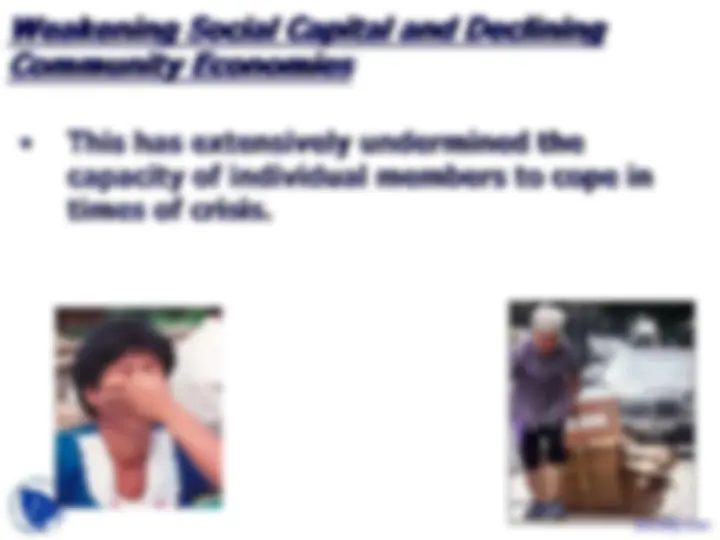
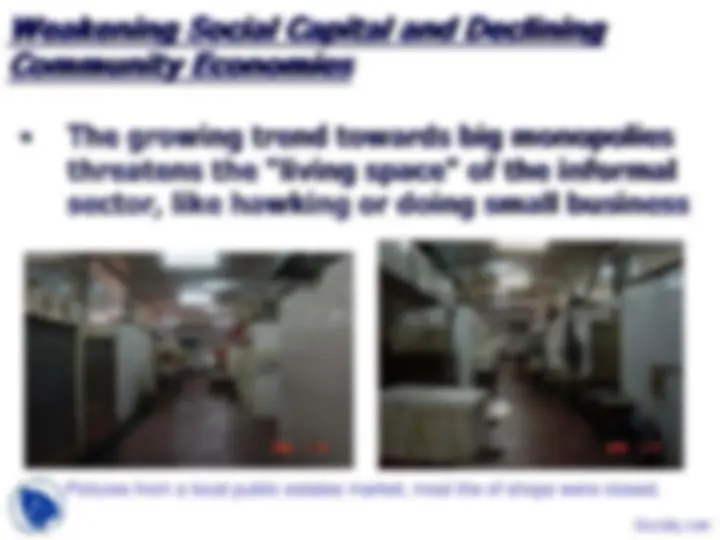
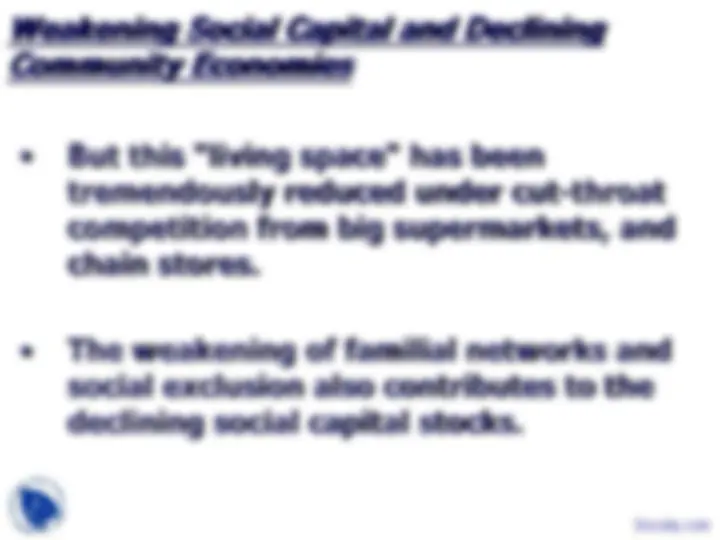
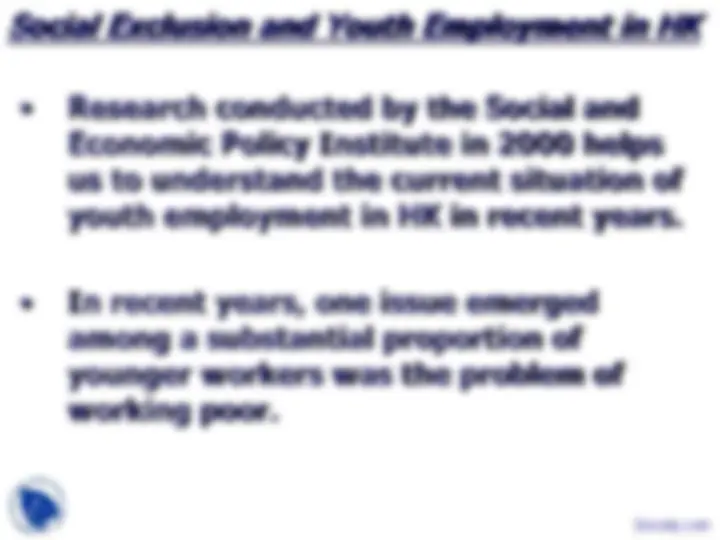
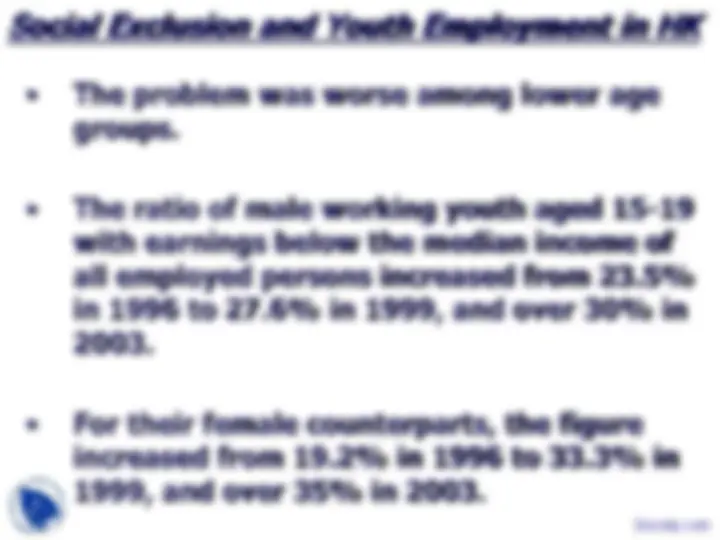
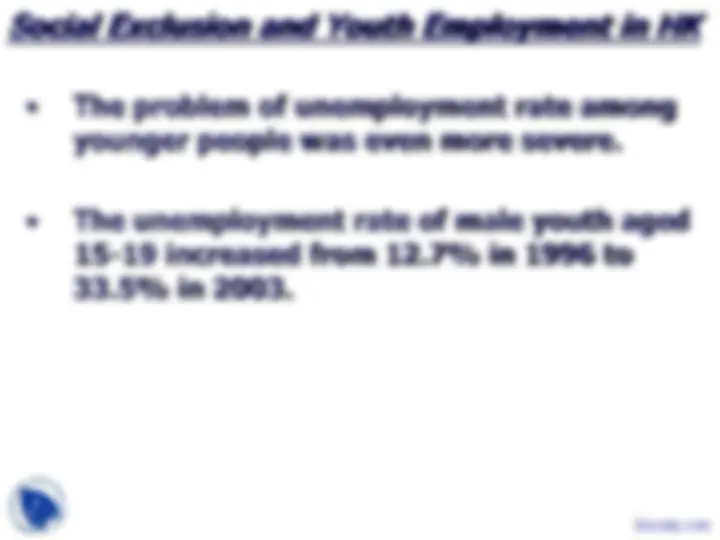
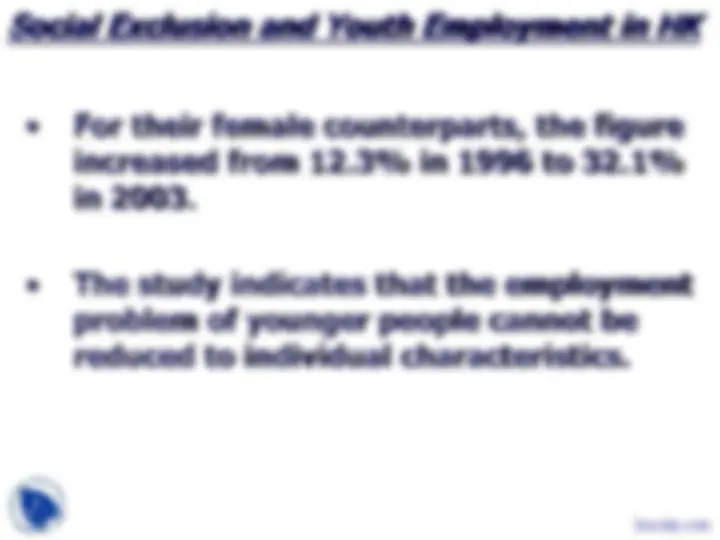
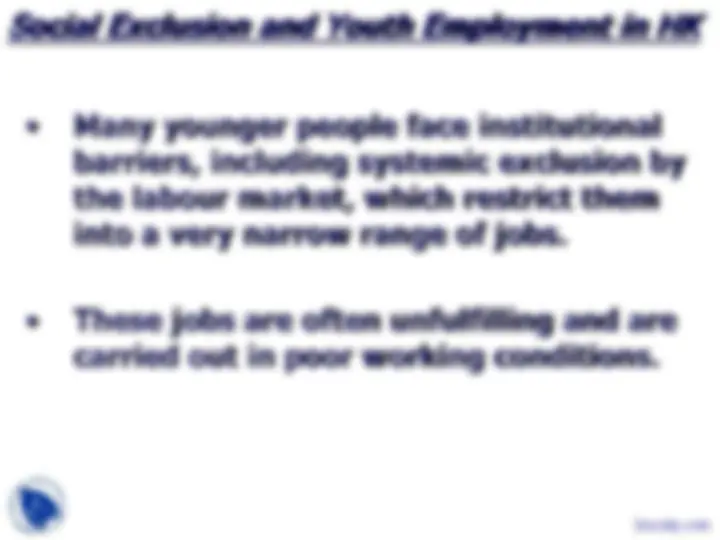
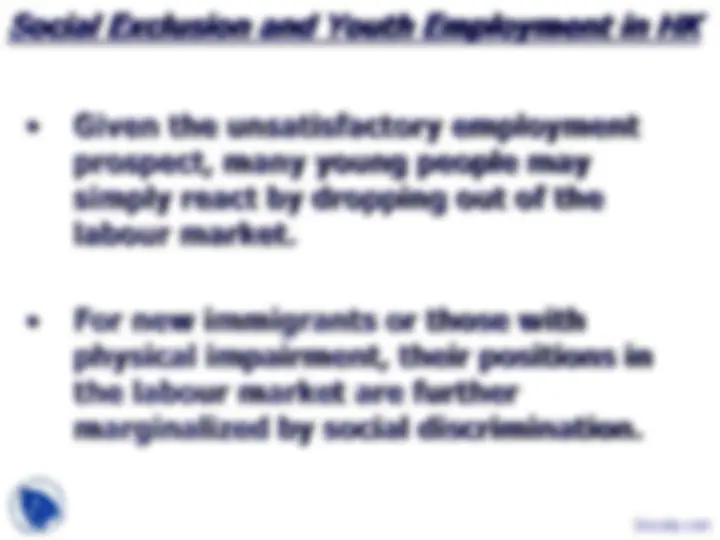
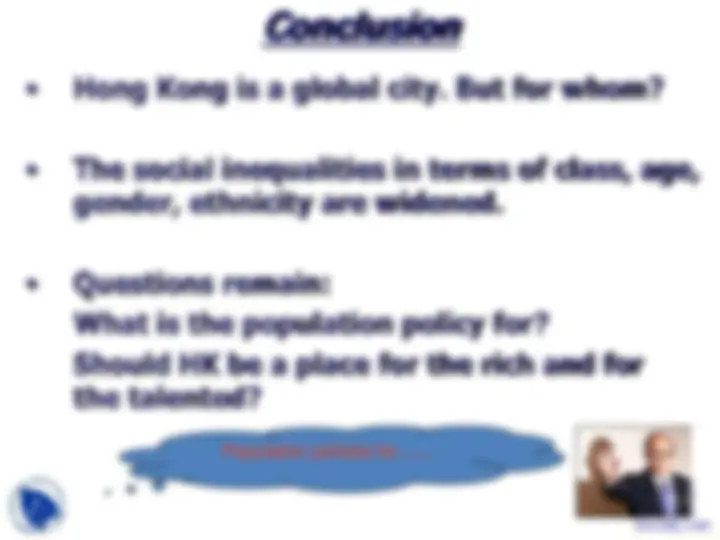


Study with the several resources on Docsity

Earn points by helping other students or get them with a premium plan


Prepare for your exams
Study with the several resources on Docsity

Earn points to download
Earn points by helping other students or get them with a premium plan
Community
Ask the community for help and clear up your study doubts
Discover the best universities in your country according to Docsity users
Free resources
Download our free guides on studying techniques, anxiety management strategies, and thesis advice from Docsity tutors
It is the Lecture Slides of Introduction to Globalization Studies which includes Trans Border Flow, Hong Kong and Mainland China, Globalization Studies, Globalization and Social Exclusion, Globalization and Global Cities, Globalization and China etc. Key important points are: Globalization and Social Exclusion, Global City, Employment In Particular, Social Exclusion, Economic Exclusion, Cultural Exclusion, Exclusion By Isolation, Spatial Exclusion, Institutional Exclusion, Increasing
Typology: Slides
1 / 29

This page cannot be seen from the preview
Don't miss anything!






















Questions: 1.What are the new forms of social exclusion (社會排斥) in Hong Kong at the time of changing itself into a global city?
2.How these global changes affect employment in general and youth employment in particular?
Them e:
K ey concept to rem em ber!
K ey concept to rem em ber!
M arginal W ork ers as “Unprotected” Deprived
W ork ers
Typical Bird view of Lower- middle Class people
W eak ening Social Capital and Declining
Com m unity Econom ies